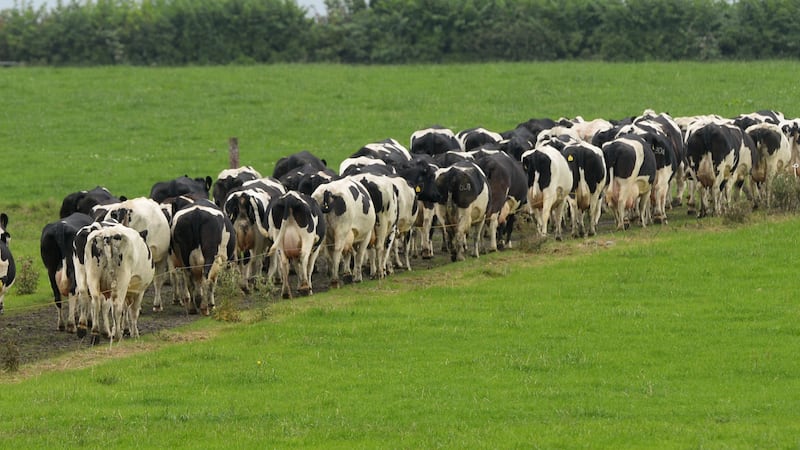Ireland’s gross domestic product (GDP) will grow at a greater rate than expected, consumer spending will accelerate and new mortgage lending will increase sharply, Davy stockbrokers said in its latest economic forecast.
In a note to clients, chief economist Conall Mac Coille said the company had revised its Irish GDP growth forecast to 5.7 per cent in 2018 – up from 3.8 per cent previously – due to Ireland’s continuing export performance.
“Exports grew by 6 per cent in 2017, helped by exceptional growth in business, computer and financial services. Ongoing foreign direct investment and imports of intellectual property mean the export sector should make a strong contribution to GDP growth in 2018 and 2019,” Davy said.
Additionally, the company issued an upbeat forecast on consumer spending, which was “surprisingly weak” in 2017. It said spending would bounce back, rising by 3.2 per cent this year, with wages and tax cuts likely to fuel spending as disposable incomes grow.
However, this is contingent on a “giveaway budget”, as a number of analysts anticipate an election either late this year, or early in 2019.
“Irish households are also likely to benefit from income tax cuts. The Department of Finance’s latest estimates are that there is room for €3.2 billion of spending increases and tax cuts in 2019.”
Wage growth
The wage growth anticipated by Davy comes against its forecast of falling unemployment, which it says will reduce to an average 4.7 per cent in 2019. As a result, wage growth will accelerate to 3 per cent next year as the labour market tightens.
On the housing front, Davy is anticipating stability in the stock of mortgage lending as transactions rise towards 60,000 in 2018. New mortgage lending, however, is expected to rise 26 per cent to €9.2 billion this year. It totalled €7.3 billion last year.
It also sees construction sector activity picking up, albeit from a low base. One metric used by Davy includes the number of new developments listed on MyHome.ie (owned by The Irish Times), which increased by 24 per cent to 426 in the first quarter.
House prices, however, are still set to rise by 8 per cent this year, having risen 11 per cent year on year in the first quarter, according to Davy’s analysis. “So far, there has been little sign of any slowdown in transaction prices,” Davy said.
It flagged that affordability has become stretched as prices have risen, noting that 18 per cent of loans last year exceeded the 3.5 times salary threshold set by the Central Bank of Ireland. Although that was inside the 20 per cent rate allowed, it was higher than the 13 per cent recorded in 2016.
Davy noted that Irish consumer confidence remains close to historic highs, new SME lending has risen to its highest level so far in this recovery, and total corporate lending recorded its first positive growth rate in almost a decade. “So there is little sign of a material impact on sentiment from Brexit,” Mr Mac Coille wrote.
Davy’s view on consumer confidence was backed up by Bank of Ireland’s April economic pulse, which found the “mood among households little changed on the month and much more upbeat than this time last year”.
Bank of Ireland’s chief economist, Loretta O’Sullivan, noted that business sentiment dipped in April, “perhaps a case of fatigue at play here with the bad weather and lingering uncertainty”.
"There hasn't been much progress on the Border issue, for example, and we see that sentiment among Connacht/Ulster businesses was down this month. However, the majority of firms remain on a growth trajectory, with two in three looking to expand their business in the next one to three years," Ms O'Sullivan added.
Separately, IrishJobs.ie reported that employment vacancies were up 9 per cent year on year in the first quarter of 2018 with Dublin, Cork and Limerick enjoying the largest share of job creation.

















